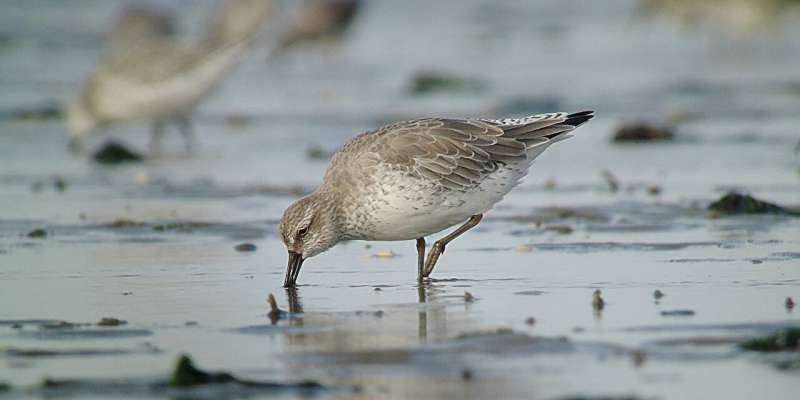This article has been reviewed according to Science X's editorial process and policies. Editors have highlighted the following attributes while ensuring the content's credibility:
fact-checked
peer-reviewed publication
trusted source
proofread
Researchers find a red knot's character is formed in first year of life

In any group of red knots, respective individuals exhibit a remarkable array of distinct character types. Birds with an exploratory character are motivated to investigate their environment and readily explore unfamiliar areas. Meanwhile, birds with inactive character types are content to remain in familiar territory. Interestingly, the birds do not appear to hatch with predetermined character types.
Their characters are formed later, in the first year of life, due to their experiences in the Wadden Sea. Selin Ersoy and her colleagues reached this conclusion in a recently published paper in the journal Animal Behaviour.
Automatic character test
Ersoy and colleagues used automated measurements to assay the characters of both old and young red knots. Young red knots were defined as birds arriving in the Wadden Sea for the first time in their lives after departing from the tundra, where they hatch. Captured birds were placed briefly in a tent containing sand-filled trays and a recording camera with a bird's-eye view of the entire tent.
A computer algorithm uses the footage to determine how much the birds have moved around the tent. Exploratory types easily cover 200 meters within 20 minutes in the tent, hopping from one tray to another. The inactive knots often remain on one of the trays until they are released.
"This automatic test has proven to be a reliable way to investigate the characters of the knots," said the test's creator, behavioral ecologist Allert Bijleveld of NIOZ. "When we put adult birds in the tent at intervals of days, weeks, and months, the computer comes to the same conclusion on character. But when we repeatedly subject young birds to the test, they are not yet consistent in their measured character," Bijleveld said.
Character and food choice
Character is also related to food choice, according to the researchers. Exploratory types are constantly looking for the best food: prey which are easy to digest. Unfortunately, high-quality prey such as shrimp and thin-shelled bivalves are difficult to find. Conversely, more passive birds are satisfied with prey that are more difficult to digest but easier to find, such as shellfish with relatively little meat and lots of shells.
Bijleveld says, "From the traces left in the birds' blood by their diet, we could see that the older birds, with a consistent character, are also consistent in their food choice. Young birds have a less consistent character and are much more variable in their diet. They seem to experiment by trying different prey, even seaweed."
Based on the results of their character assays, Ersoy and colleagues conclude in their article that the character of the red knot is formed in the first year of life.
The character of young birds is shaped by their initial experiences in the Wadden Sea, following their arrival from the tundra breeding grounds, where their first sustenance primarily consisted of insects. When they return to the Wadden Sea in subsequent years, they have seemingly formed food preferences and developed their character accordingly.
For Bijleveld, this research is another step forward in assembling the complex puzzle of wader behavior. "It is fascinating to see how young birds still react flexibly to their environment and older birds have more fixed patterns. How this fits into a broader evolutionary picture in terms of flexibility in a changing environment is an open but interesting question."
"Apparently, it pays off to specialize over time. In a rapidly changing environment, it will therefore be the young birds that can adapt most easily to a new situation with, for example, very different food."
More information: Selin Ersoy et al, Pathway for personality development: juvenile red knots vary more in diet and exploratory behaviour than adults, Animal Behaviour (2023). DOI: 10.1016/j.anbehav.2023.11.018
Journal information: Animal Behaviour
Provided by Royal Netherlands Institute for Sea Research




















